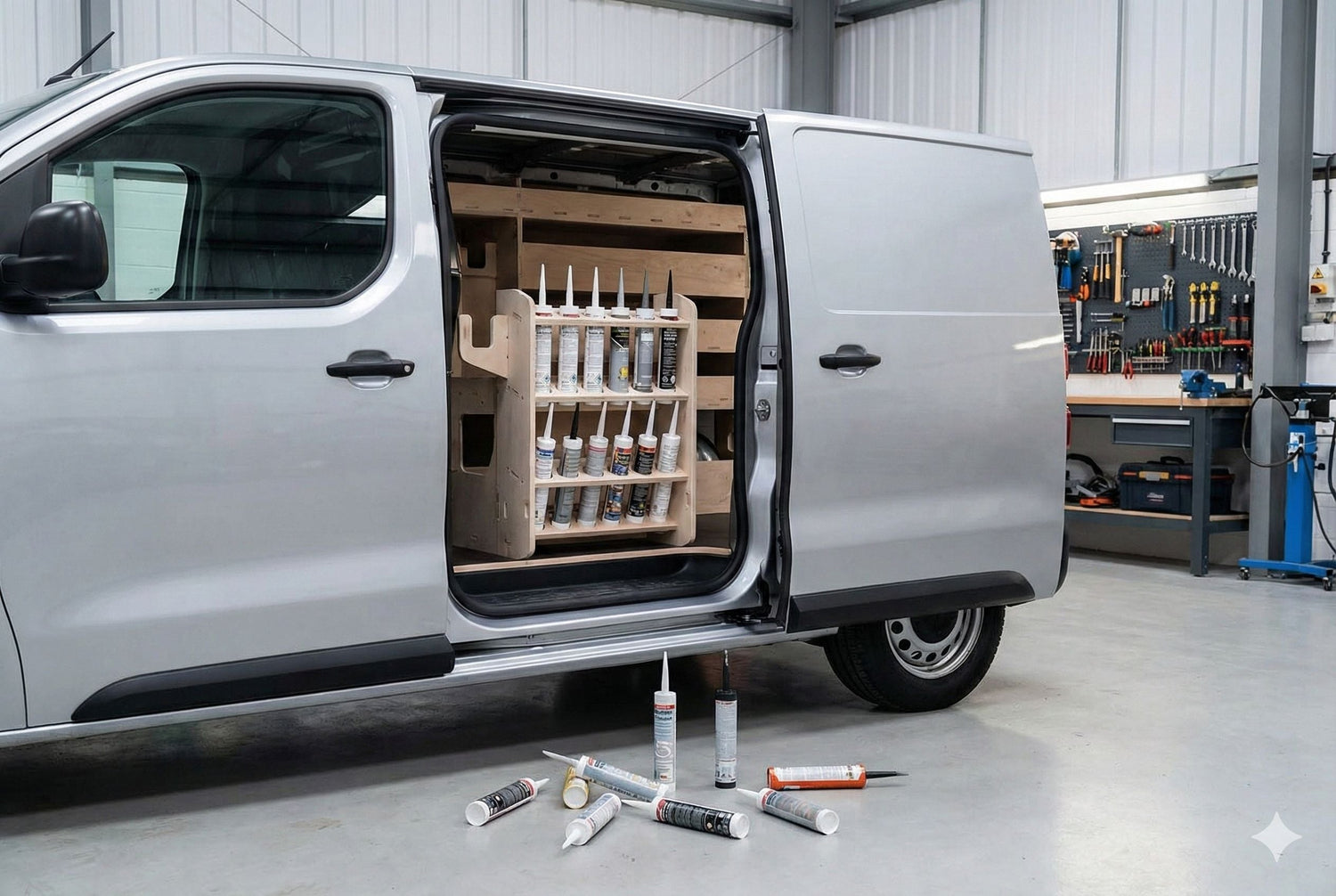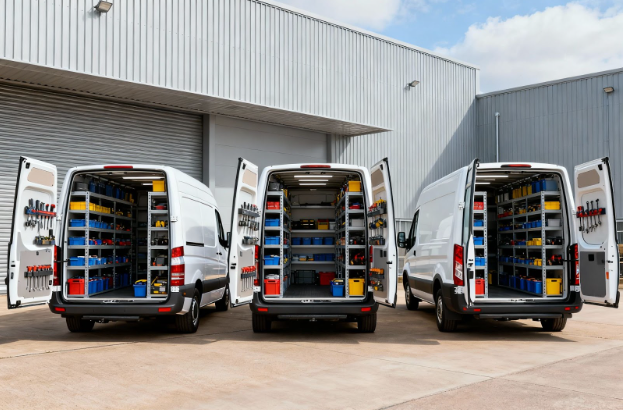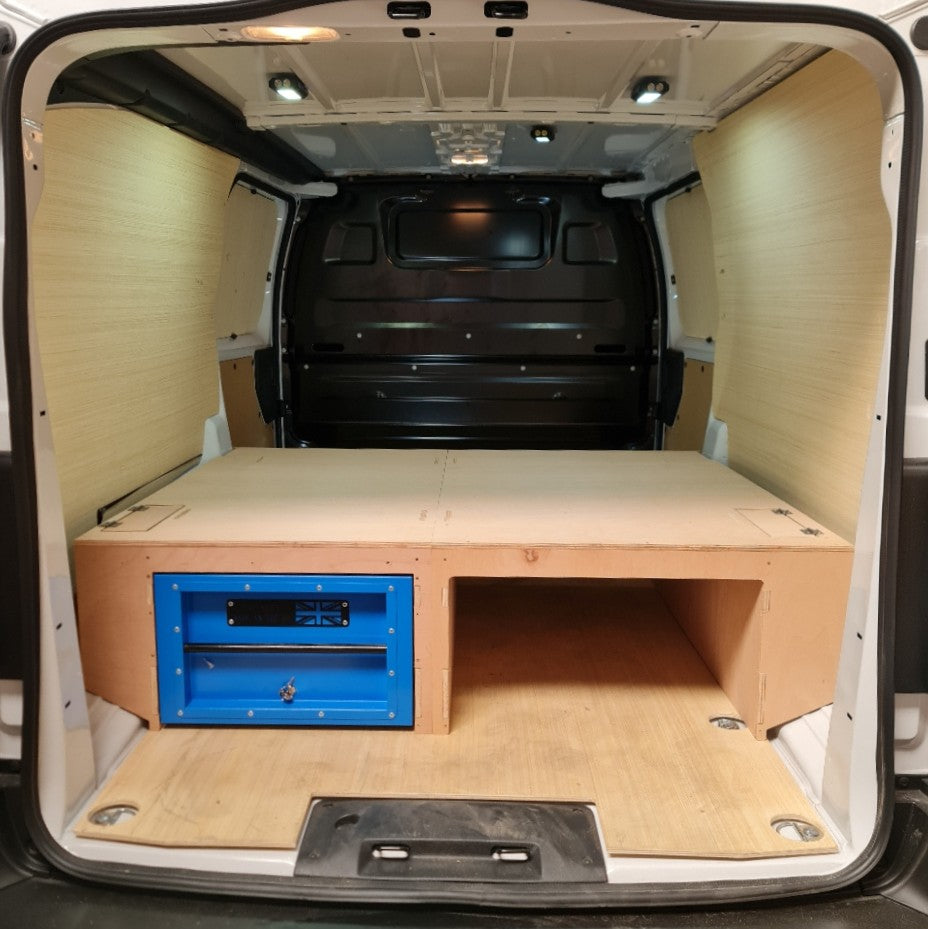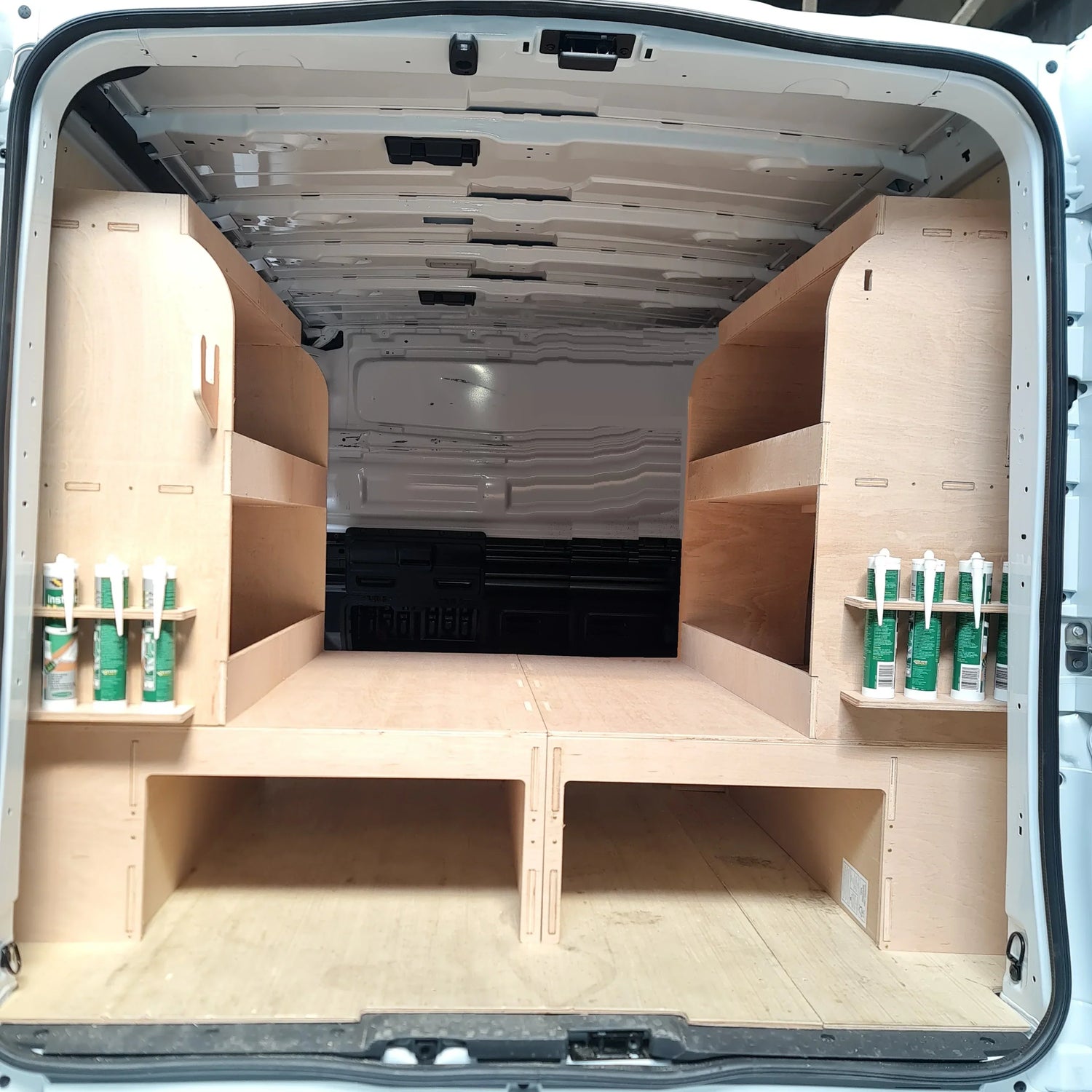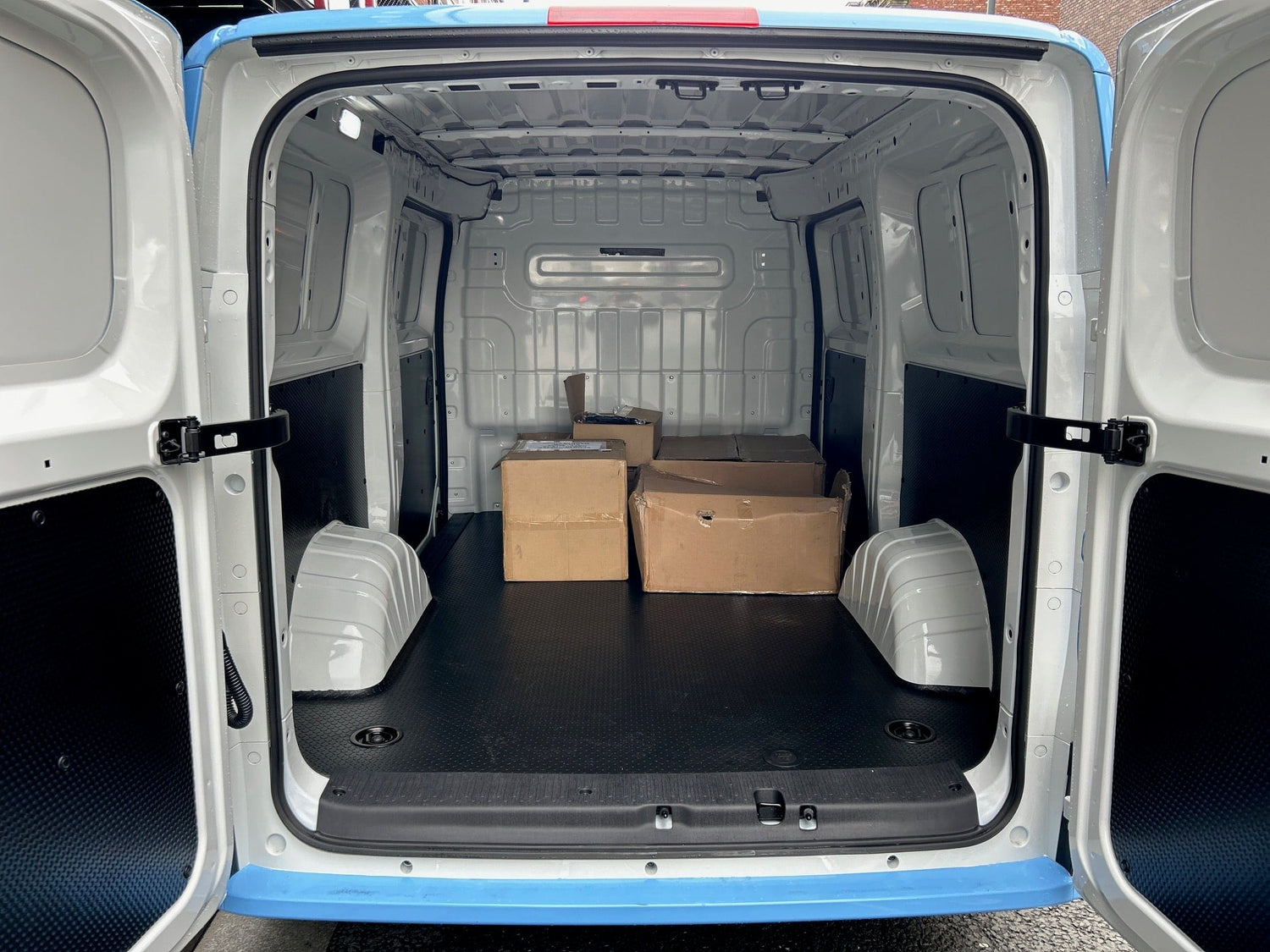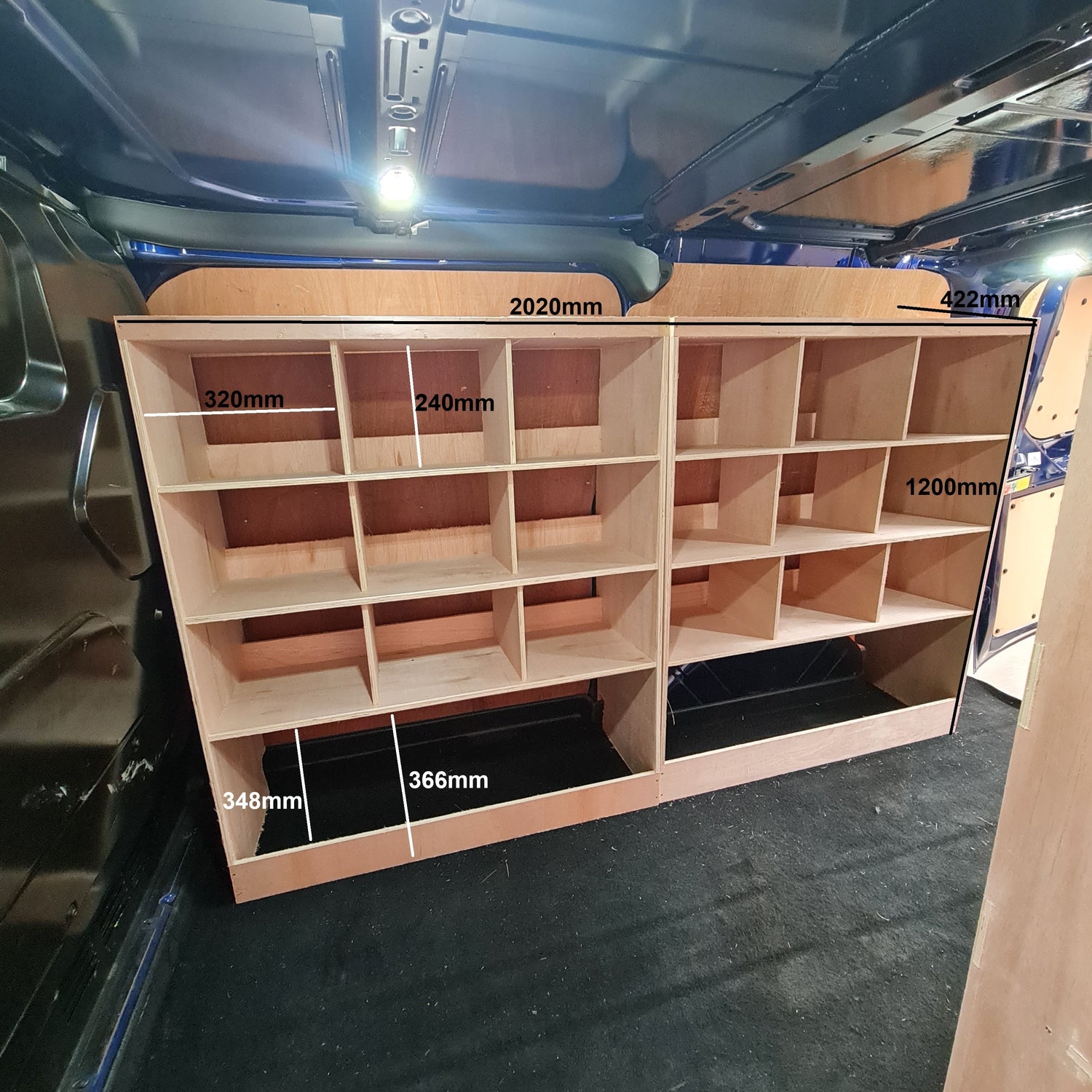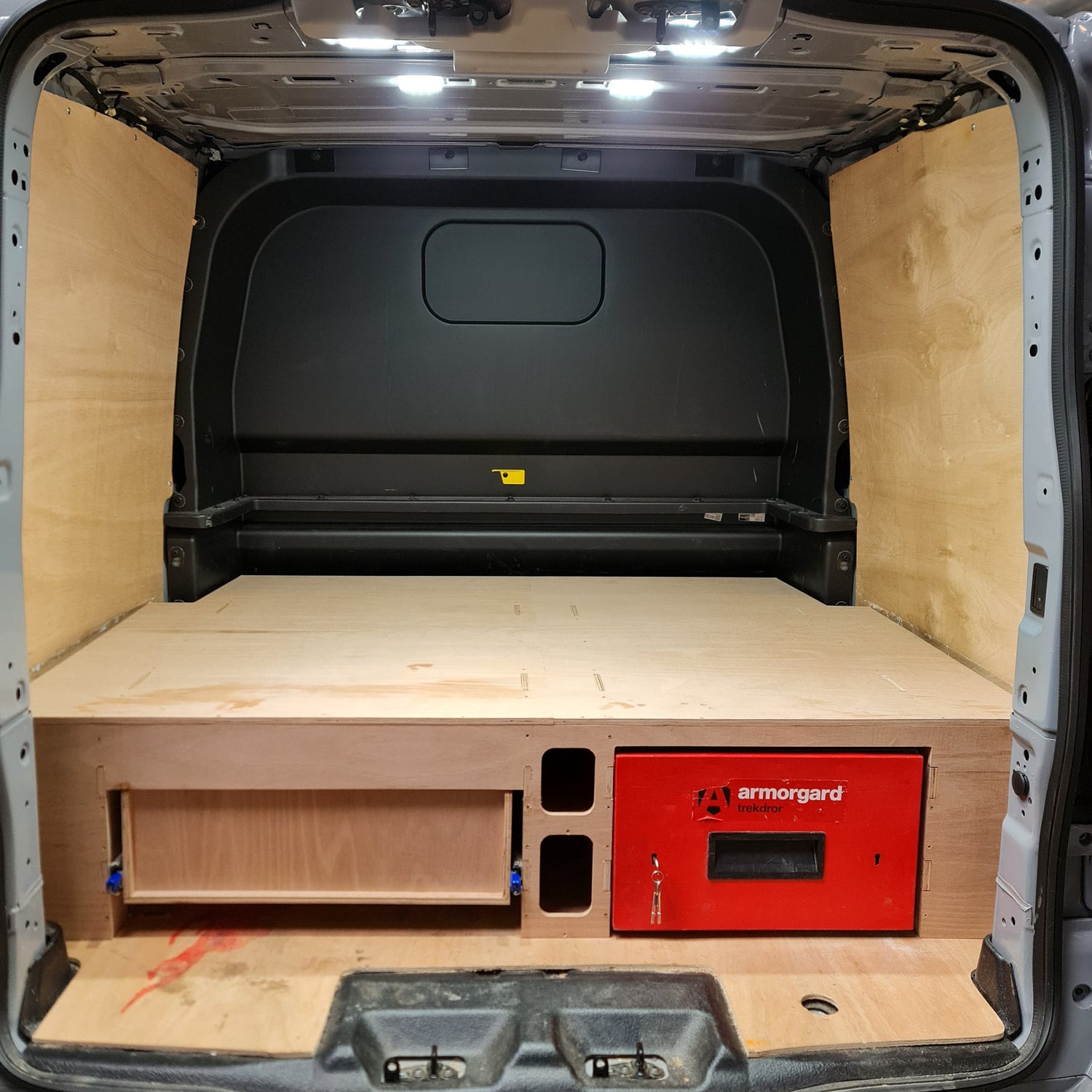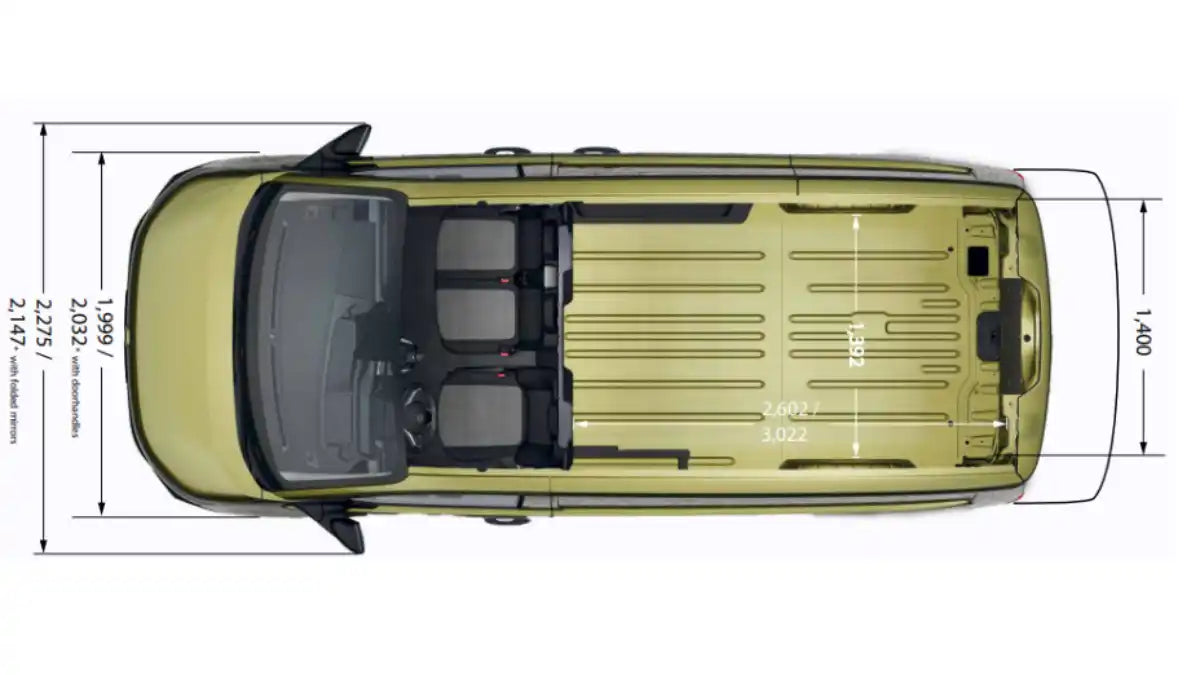Key Takeaways
-
Implementing structured preventative maintenance can extend mobile storage system lifespan by 40-50%
-
Daily visual checks combined with scheduled professional inspections create a comprehensive maintenance strategy
-
Proper load management and employee training are crucial elements of system preservation
-
Early detection of minor issues prevents catastrophic failures and costly replacements
-
Detailed documentation of all maintenance activities protects warranty validity and ensures regulatory compliance
Explore our mobile storage solutions
Introduction: Why Maintenance Matters for Mobile Storage Systems
Mobile storage systems represent a significant investment for businesses across industries—from warehouse facilities and retail operations to service vehicles and logistics fleets. These sophisticated racking solutions transform space utilization, streamline operations, and enhance productivity. However, their continued performance and longevity depend entirely on proper maintenance.
When maintenance is neglected, the consequences extend far beyond the immediate repair costs. Premature system failure leads to operational disruptions, safety hazards, inventory damage, and ultimately, the substantial expense of complete replacement. Research from industry experts indicates that properly maintained mobile storage systems can remain functional for 10-15 years, while neglected systems often require replacement in as little as 3-5 years.
This comprehensive guide explores how implementing strategic preventative maintenance schedules can dramatically extend the operational lifespan of your mobile storage systems. We'll examine essential inspection points, maintenance frequencies, best practices, and expert recommendations to help you maximize your investment while ensuring optimal safety and performance.
Understanding Mobile Storage System Vulnerabilities
The Cost of Neglected Maintenance
The financial impact of inadequate maintenance extends well beyond the visible costs:
-
Direct replacement expenses: Depending on size and complexity, replacing mobile storage systems can cost anywhere from £1,000 for small vehicle installations to £50,000+ for extensive warehouse systems
-
Operational downtime: System failure typically results in 2-5 days of disrupted operations
-
Emergency repair premiums: Urgent repairs often cost 40-60% more than scheduled maintenance
-
Inventory damage: Racking failures frequently damage stored goods, with average losses exceeding £5,000 per incident
-
Safety incident costs: Workplace injuries from storage system failures average £25,000+ in direct and indirect costs
-
Insurance implications: Many policies require documented maintenance, with claim denials possible for neglected systems
Research by the Storage Equipment Manufacturers Association (SEMA) indicates that for every £1 invested in preventative maintenance, businesses save approximately £4-£6 in premature replacement costs, repairs, and associated expenses.
Common Failure Points in Mobile Systems
Mobile storage systems have unique vulnerabilities that differ from stationary installations:
Movement Mechanisms
The components that enable mobility are often the first to fail:
-
Wheels and castors: Bearing failures, flat spots, and material degradation
-
Tracks and guides: Debris accumulation, misalignment, and wear patterns
-
Drive systems: Motor failures, chain/belt deterioration, and control malfunctions
-
Braking mechanisms: Wear on braking surfaces and locking component failures
Structural Components
The dynamic nature of mobile systems creates distinctive structural stresses:
-
Connection points: Increased vibration leads to fastener loosening
-
Support frames: Repeated movement can cause metal fatigue
-
Cross-bracing: Dynamic forces may weaken diagonal supports
-
Floor interfaces: Movement creates additional stress on mounting points
Safety Features
Critical safety elements require vigilant monitoring:
-
Anti-tip devices: Prevent dangerous tipping during movement
-
End stops: Limit travel to prevent system derailment
-
Locking mechanisms: Secure units in position during access
-
Load limiters: Prevent dangerous overloading conditions
Building Your Preventative Maintenance Schedule
Daily Operational Checks (5-10 minutes)
These quick inspections should become part of standard operating procedures:
-
Visual scan: Brief examination for obvious damage or issues
-
Movement test: Verify smooth, resistance-free operation
-
Safety check: Confirm all locking mechanisms engage properly
-
Load assessment: Quick verification that weight limits aren't exceeded
-
Cleanliness review: Check for debris that could impede operation
Implementation tip: Create a simple daily checklist displayed prominently near the system, with sign-off requirements for accountability.
Weekly Maintenance Activities (15-30 minutes)
More thorough than daily checks but still relatively quick:
-
Detailed visual inspection: Examine all visible components
-
Track cleaning: Remove debris from tracks and moving surfaces
-
Hardware verification: Check for loose fasteners and connections
-
Lubrication assessment: Verify moving parts remain properly lubricated
-
Load distribution review: Ensure proper weight distribution across the system
-
Safety system testing: Test all safety features for proper function
Implementation tip: Assign specific team members to weekly maintenance responsibility with rotating schedules to ensure fresh perspectives.
Monthly Comprehensive Inspection (1-2 hours)
A more in-depth examination requiring dedicated time:
-
Complete component inspection: Thorough examination of all system elements
-
Measurement verification: Check critical dimensions and alignments
-
Lubrication application: Apply recommended lubricants to all moving parts
-
Load testing: Verify system handles designated loads without issues
-
Documentation update: Record findings, actions taken, and future needs
-
Photographic records: Take dated photos of key components for comparison
-
Minor repairs: Address small issues before they escalate
Implementation tip: Create a detailed monthly inspection form with specific checkpoints and measurement records to track changes over time.
Quarterly Professional Assessment (Half-day)
Conducted by maintenance staff with specialized training:
-
Partial unloading: Remove inventory from sections being inspected
-
Structural analysis: Detailed examination of all structural elements
-
Drive system service: Comprehensive service of movement mechanisms
-
Safety certification: Thorough testing of all safety systems
-
Load capacity verification: Confirm system still meets original specifications
-
Preventative replacements: Replace wear items before failure occurs
-
Detailed documentation: Comprehensive records including measurements
Implementation tip: Schedule quarterly assessments during lower-activity periods and rotate which sections are completely unloaded for thorough inspection.
Annual Expert Inspection (Full day)
Conducted by qualified external specialists:
-
Complete system evaluation: Thorough assessment of entire installation
-
Compliance verification: Ensure adherence to current regulations
-
Comprehensive testing: Test all system functions under various conditions
-
Certification issuance: Formal documentation of system condition
-
Detailed reporting: Written assessment with photographic evidence
-
Recommendation development: Professional guidance on repairs/upgrades
-
Lifespan projection: Expert estimate of remaining useful life
Implementation tip: Schedule annual inspections to coincide with business planning cycles, allowing for budget allocation based on findings.
Critical Inspection Points for Mobile Storage Systems
Structural Elements
Uprights and Frames
-
Vertical alignment: Measure deviation from plumb (should not exceed 3mm per meter height)
-
Base condition: Examine for damage, corrosion, or deformation
-
Weld integrity: Inspect all welded joints for cracking or separation
-
Diagonal bracing: Verify all cross-braces remain tight and undamaged
Beams and Shelving
-
Horizontal alignment: Check for sagging or deformation (should not exceed 1/180 of span)
-
Connection security: Ensure beam connectors fully engage with locking mechanisms
-
Surface condition: Examine for dents, punctures, or other damage
-
Load indicators: Verify visible load rating labels remain legible
Mobility Components
Wheel Assemblies
-
Bearing condition: Test for smooth rotation without play or noise
-
Wheel surface: Check for flat spots, cracking, or material degradation
-
Mounting security: Verify secure attachment to the frame
-
Height adjusters: Ensure proper function of any leveling mechanisms
Track Systems
-
Track alignment: Verify parallel installation within tolerances
-
Surface condition: Examine for wear patterns, debris, or damage
-
Anchoring security: Check all floor attachments remain tight
-
Transition points: Inspect for smooth transitions between track sections
Drive Mechanisms
-
Manual systems: Test handles, cranks, and chain drives for proper function
-
Motorized systems: Verify motor operation, control function, and safety features
-
Gearing components: Check for wear, proper lubrication, and secure mounting
-
Limit switches: Test end-of-travel and safety limit functions
Safety Features
Anti-Tip Systems
-
Stabilizer condition: Inspect anti-tip devices for damage or wear
-
Engagement testing: Verify proper function under load conditions
-
Mounting security: Check all attachment points remain secure
-
Clearance verification: Ensure proper clearances are maintained
Locking Mechanisms
-
Lock function: Test positive engagement in multiple positions
-
Wear assessment: Check for excessive wear on engagement surfaces
-
Spring tension: Verify return springs maintain proper tension
-
Indicator function: Ensure any lock indicators display correctly
Warning Systems
-
Label condition: Check all warning and instruction labels remain legible
-
Indicator lights: Test function of any warning lights or indicators
-
Audible alarms: Verify proper operation of movement alarms
-
Lockout systems: Test any safety lockout or immobilization features
Maintenance Best Practices for Maximum Lifespan
Cleaning and Environmental Protection
Proper cleaning extends system life significantly:
-
Track cleaning frequency: Clean tracks weekly at minimum, daily in dusty environments
-
Appropriate cleaning agents: Use only non-corrosive, manufacturer-approved cleaners
-
Moisture protection: Address any water exposure immediately to prevent corrosion
-
Dust management: Implement regular dusting of horizontal surfaces and components
-
Drainage verification: Ensure any floor drainage systems remain functional
-
Ventilation considerations: Provide adequate airflow in enclosed storage areas
Lubrication Management
Proper lubrication is critical for mobile systems:
-
Lubricant selection: Use only manufacturer-recommended products
-
Application methods: Follow proper techniques to avoid over-application
-
Frequency guidelines: Adhere to environment-specific lubrication schedules
-
Contamination prevention: Clean surfaces thoroughly before applying lubricants
-
Documentation requirements: Record all lubrication activities with product details
-
Specialized components: Address high-stress points with appropriate lubricants
Load Management Strategies
How you use the system directly impacts its lifespan:
-
Weight distribution principles: Distribute loads evenly across shelf spans
-
Maximum capacity adherence: Never exceed 80% of rated capacity as safety margin
-
Heavy item placement: Position heaviest items at lower levels near uprights
-
Dynamic load considerations: Account for additional stress during system movement
-
Visual indicators: Implement color-coding for weight zones and limits
-
Inventory rotation practices: Rotate stock to prevent continuous point loading
Employee Training Programs
Staff education is as important as physical maintenance:
-
Initial training requirements: Comprehensive training for all new users
-
Refresher frequency: Conduct update training at least annually
-
Incident response procedures: Train staff on proper actions following impacts
-
Reporting mechanisms: Establish clear processes for reporting concerns
-
Operational limitations: Ensure all users understand system constraints
-
Documentation practices: Train staff on required record-keeping
Documentation and Record-Keeping Systems
Essential Maintenance Records
Maintain these critical documents:
-
Manufacturer specifications: Original documentation with load ratings and maintenance requirements
-
Installation verification: Records confirming proper initial installation
-
Inspection histories: Dated records of all inspections with findings
-
Repair documentation: Details of all repairs including parts replaced
-
Modification records: Documentation of any system changes with engineering approval
-
Load test certifications: Results of periodic load testing
-
Photographic evidence: Time-stamped images showing system condition
-
Training records: Documentation of all staff training with dates and content
Digital Maintenance Management
Modern technology enhances maintenance effectiveness:
-
Maintenance software options: Consider dedicated CMMS (Computerized Maintenance Management System) solutions
-
Mobile applications: Utilize apps for on-site documentation and checklists
-
QR code implementation: Apply codes to racking for instant access to history
-
Cloud storage solutions: Maintain secure off-site backup of all records
-
Automated scheduling: Implement reminder systems for maintenance activities
-
Digital imaging archives: Maintain comparative images showing condition over time
-
Reporting capabilities: Generate trend analysis to identify recurring issues
Professional Assistance Guidelines
When to Seek Expert Help
Some situations demand professional intervention:
-
Visible deformation: Any bent or deformed structural components
-
Impact incidents: Following any significant collision or impact
-
Operational changes: When altering system usage patterns or load types
-
Relocation planning: Before disassembling for relocation
-
Compliance updates: When regulations change affecting your system
-
Age milestones: At manufacturer-recommended major service intervals
-
Unusual symptoms: Any unexpected noises, movement, or operational issues
Selecting Qualified Service Providers
Choose maintenance partners carefully:
-
Certification requirements: Verify appropriate industry certifications
-
Manufacturer authorization: Confirm approval from your system's manufacturer
-
Experience verification: Check experience with your specific system type
-
Insurance coverage: Ensure adequate liability coverage
-
Reference evaluation: Contact previous clients with similar systems
-
Documentation practices: Review sample inspection reports for thoroughness
-
Response capabilities: Confirm emergency service availability
Understanding Compliance Requirements
Regulatory considerations vary by region and industry:
-
PUWER regulations: Provision and Use of Work Equipment Regulations requirements
-
SEMA guidelines: Storage Equipment Manufacturers Association standards
-
Insurance mandates: Policy-specific inspection and documentation requirements
-
Industry-specific regulations: Additional requirements for specialized industries
-
Health and Safety Executive expectations: Current HSE guidance on racking systems
-
Record retention periods: Legal requirements for maintenance documentation
-
Certification frequency: Required intervals for professional certification
FAQs: Mobile Storage System Maintenance
How does mobile storage system maintenance differ from stationary racking maintenance?
Mobile storage systems face unique challenges due to their dynamic nature. Unlike stationary racking, mobile systems have moving components that create additional wear points and stress patterns. The movement mechanisms—wheels, tracks, drive systems, and controls—require specialized attention and more frequent inspection. Additionally, the repeated movement creates vibration that can gradually loosen connections throughout the structure.
Another key difference is the importance of floor condition and system leveling. Mobile systems depend on proper track alignment and floor integrity to function safely. This means floor inspections become a critical part of the maintenance program, which isn't as crucial for stationary installations.
What are the warning signs that our mobile storage system needs immediate attention?
Several indicators suggest urgent professional assessment is needed:
-
Unusual resistance or binding during movement
-
Visible deflection or bending in structural components
-
Unusual noises (grinding, squeaking, or popping) during operation
-
Difficulty engaging or maintaining position locks
-
Visible damage to wheels, tracks, or drive components
-
Excessive play or movement in components that should be rigid
-
Floor damage around track installations or mounting points
-
Visible rust or corrosion, particularly at connection points
-
Components that appear misaligned or out of position
-
Any recent impact incident, regardless of apparent damage
If you observe any of these conditions, immediately remove the system from service until qualified inspection can be performed.
How do environmental factors affect maintenance requirements?
Environmental conditions significantly impact maintenance frequency and focus:
High humidity environments accelerate corrosion and may require additional protective coatings and more frequent inspection of connection points. Consider dehumidification in storage areas when possible.
Temperature fluctuations cause expansion and contraction that can loosen connections over time. In environments with significant temperature changes, increase the frequency of hardware tightness checks.
Dusty conditions require more rigorous cleaning protocols, particularly for tracks and moving components. Consider dust covers for sensitive mechanisms and increase cleaning frequency.
Corrosive environments (including proximity to chemicals or salt air) dramatically accelerate deterioration and may require specialized protective treatments and more frequent component replacement.
Vibration exposure (such as in vehicle installations or near machinery) accelerates fastener loosening and requires more frequent connection checks and potentially thread-locking compounds.
Can we perform all maintenance in-house, or do we need professional services?
A balanced approach typically works best:
Daily, weekly, and monthly inspections can generally be performed by properly trained in-house staff following detailed checklists. These regular checks focus on obvious issues, cleanliness, and basic function.
Quarterly assessments should ideally involve staff with specialized training or experience with your specific systems. This might be maintenance personnel with additional training from the manufacturer.
Annual inspections should be conducted by qualified external professionals with specific expertise in mobile storage systems. These inspections provide objective assessment, professional documentation, and often certification required for insurance and regulatory compliance.
Many businesses develop a tiered approach: in-house staff handle routine maintenance, facility maintenance personnel manage quarterly inspections, and external specialists conduct annual certification inspections.
What documentation should we maintain for warranty and liability protection?
Comprehensive documentation protects your business in multiple ways:
-
Original purchase and installation records: Proof of proper installation and system specifications
-
Manufacturer documentation: Original manuals, load ratings, and maintenance requirements
-
Maintenance logs: Dated records of all inspections and maintenance activities
-
Repair history: Documentation of all repairs including parts used and work performed
-
Modification approvals: Engineering verification for any system modifications
-
Training records: Evidence of proper staff training on system use
-
Incident reports: Documentation of any accidents or impacts involving the system
-
Professional inspection certificates: Annual third-party inspection documentation
-
Photographic evidence: Time-stamped images showing system condition
-
Load test results: Documentation of periodic load testing
Store these records in both physical and digital formats with secure backup. Many warranty claims are denied due to inadequate maintenance documentation, so thorough record-keeping is essential.
How should we budget for mobile storage system maintenance?
Industry benchmarks suggest allocating 2-3% of the original system cost annually for maintenance activities. This typically breaks down as:
-
30-40% for routine in-house maintenance (labor and supplies)
-
20-30% for quarterly assessments (internal or external resources)
-
20-30% for annual professional inspection and certification
-
10-20% contingency for unexpected repairs
For a system with an original cost of £10,000, this represents an annual maintenance budget of £200-300, significantly less than premature replacement costs.
As systems age beyond 7-10 years, gradually increase the maintenance budget by approximately 5% annually to accommodate increasing component replacement needs.
What role does proper training play in extending system lifespan?
Training is perhaps the most cost-effective maintenance investment possible:
-
Operational training ensures proper system use, preventing overloading and improper operation that can cause premature wear
-
Visual inspection training helps staff identify emerging issues before they become serious problems
-
Reporting procedures ensure concerns are communicated promptly to maintenance personnel
-
Load management education prevents dangerous overloading conditions
-
Impact prevention training reduces the risk of collisions that cause structural damage
-
Cleaning protocols maintain system condition and prevent debris-related issues
Studies indicate that comprehensive user training can extend system lifespan by 15-25% even without other maintenance improvements. Consider formal certification for key personnel who supervise system use.
Conclusion: Maximizing Your Mobile Storage Investment
Implementing a comprehensive preventative maintenance program for your mobile storage systems delivers substantial returns through extended service life, enhanced safety, improved operational reliability, and significant cost savings. The most effective programs combine scheduled inspections, proper documentation, staff training, and professional expertise.
The financial case for preventative maintenance is compelling—for every year of extended service life, businesses typically save 15-20% of the replacement cost. For a £15,000 mobile storage system, extending lifespan from 8 years to 12 years represents approximately £9,000 in savings, far exceeding the maintenance costs during that period.
Beyond financial considerations, proper maintenance ensures operational continuity, protects stored inventory, provides a safer work environment, and maintains compliance with regulatory requirements. Each of these benefits contributes to overall business performance and risk reduction.














